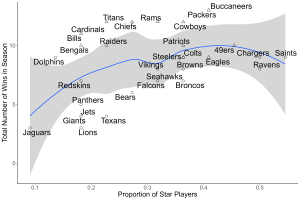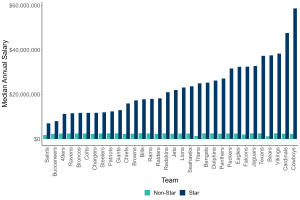By: Andy Loignon
A Passion for Football…
Like many kids growing up in Maine, I spent my Sundays watching the New England Patriots and witnessed their evolution from a team of lackluster performers to perennial Super Bowl contenders. In fact, even though it’s been 2 decades, I can distinctly remember watching Adam Vinatieri clinch the Patriots’ first title in the waning seconds of Super Bowl XXXVI. From that surprise run to their most recent title in 2019, the Patriots consistently made the playoffs, won multiple Super Bowls, and are now widely seen as one of the most accomplished dynasties in the history of the National Football League (NFL).
The “Too Much Talent Effect” in the NFL?
As a researcher at CCL who now spends quite a bit of time studying teams and teamwork, I can’t help but reflect on what made those Patriot teams so uniquely successful. One answer I keep coming back to is that New England knew something that other teams are still struggling to understand: when it comes to talent, more may not be better. That is, research has consistently found that adding more and more talented players to the same team does not yield increasing benefits for the group. Instead, perhaps counterintuitively, increasing the amount of star players within a group often yields diminishing returns.[i] This effect is so pervasive, across sports and in business, that some have dubbed it, the “Too Much Talent Effect.” [ii]
This effect also emerges in the NFL. Consider Figure 1 below. This chart shows the relationship between the proportion of all-star players on each team’s roster during the and the number of wins they achieved during the 2021 season. All-star players, in this case, are rated as being among the top 10% in the league in terms of their talent.[iii]
What quickly emerges is that teams with the most star-studded rosters(e.g., the Saints, Chargers, and Ravens) won fewer games. Said another way, teams who had far less talented players., with fewer all-stars on their rosters, actually won more games. In fact, over half the teams who made the playoffs in 2021 had just 30% of their starting positions filled with star players. The rest of their rosters featured non-stars.
Figure 1. NFL Teams with Star-Studded Rosters Win Fewer Games Than Teams with Less Talent
 Note. Triangles denote playoff teams in 2021.
Note. Triangles denote playoff teams in 2021.
In many ways, the Too Much Talent Effect is one reason why watching the NFL is so entertaining. If winning football games were as easy as filling one’s roster with the most talented players, then the richest teams, who often occupy the most lucrative media markets, would dominate every year. Instead, fans believe, and rightfully so, that on “any given Sunday” their team could win – no matter the opponent or their team’s track record.
What the “Too Much Talent Effect” Means for Team Development
If talent isn’t the sole factor for achieving success as a team, what other factors contribute to effective teams?” To answer this question, we recently developed our Framework on Team Effectiveness (see Figure 2 below).[iv] This framework, which is based on CCL’s collective experience supporting leaders and their teams as well as a comprehensive review of the existing literature, presumes that 4 components are critical for effective teams:
- Core
- Collective mindset
- Cohesive relationships
- Connection
Interestingly, having too little or too much talent, falls under a single domain—Core, or the reason the team has come together. This component emphasizes having the right purpose, practices, and people. It’s the last component, people, that reflects the amount of talent and ability that is composed within the team. The remaining domains (i.e., Collective Mindset, Cohesive Relationships, and Connection) highlight all the other ways teams can be more or less effective independent of the talent within the group.
Figure 2. CCL’s Framework on Team Effectiveness

In many ways, this framework applies to the New England Patriots teams from my childhood. First, the Patriots had a strong Core that was not defined solely by their people. That is, even in their heyday, the Patriots only had 4 or 5all-stars on the field each season.[v] Of course, one of those stars was Tom Brady, who happens to be arguably the greatest quarterback of all time. Nevertheless, the Patriots still had to fill 21 other positions on the field (not to mention special teams players and substitutes). Furthermore, along with having enough talent, the Patriots were known for having a clear purpose and established practices. Many coaches and players referred to “The Patriot Way” as a clear set of expectations focused on winning, playing within the system, and not becoming complacent.[vi]
The team also possessed a Collective Mindset. Most notably, the Patriots had a “next person” up mentality where, at its peak, players were expected to perform a variety of roles. In fact, some players even played on the opposite side of the ball from their traditional role (e.g., wide receivers switching from offense to play cornerback on defense).[vii] Such versatility afforded the team the opportunity to deploy their talent in different ways depending on the circumstances at hand.[viii]
The New England dynasty also featured Cohesive Relationships among players who were defined by trust, admiration, and even friendship.[ix] These strong relationships can afford team members the opportunity to speak truthfully and directly with one another when such feedback is needed.
Finally, Bill Belichick, the head coach of the Patriots throughout the dynasty, has a strong pedigree of placing his former assistants throughout the NFL[x] and has close relationships with some of the most established collegiate programs.[xi] Such Connections within and beyond the league likely afford the Patriots useful conduits of information for forming their strategies, scouting players, and making personnel decisions.
Investing in Stars Rather Than Entire Teams Comes at A Price
The Patriots also provide another cautionary tale in relation to the “Too Much Talent Effect”. In Figure 3 below, I’ve plotted the median salary that NFL teams spent on star and non-star players during the 2021 season. As one would expect, all teams spend much more on their star players than their non-star players (on, average, about 8 times more, to be precise). It makes sense that the most talented players can demand more compensation from a team given the unique skills and abilities. However, what this graph suggests is that some teams spent upwards of 15 times more on their stars (e.g., the Dallas Cowboys, Arizona Cardinals, and Minnesota Vikings). The New England Patriots, on the other hand, are one of the most frugal teams, spending only 4.8 times on their stars players relative to their non-stars.
Figure 3. Some Teams Spend Up to 15 Times More on Stars Than Non-Stars

Thus, by being able to leverage all 4 components of team effectiveness, the New England Patriots can afford to limit their investments in a small number of players and allocate resources in other areas. Such frugality may also benefit team leaders in other settings and organizations who must manage increasingly tight budgets and dwindling head counts. Specifically, if leaders are concerned with their team’s effectiveness, then investing in their entire team’s development rather than specific individual contributors, may produce more consistent results.
A New Season Is Underway…
With the 2023-2024 season recently underway, now might be a good time to take stock of your own team and what you’ve heard coming out of this year’s training camps and preseason. Are they relying too much on their talent or do they have the other components of the Team Effectiveness framework in place (i.e., Collective Mindset, Cohesive Relationships, and Connections)? The answer to this question will likely help determine whether they can fully leverage the players on their roster to win more games, or if they will lose out to a less skilled opponent.
References
[i] Hendricks, J. L., Call, M. L., & Campbell, E. M. (in press). High performer peer effects: A review, synthesis, and agenda for future research. Journal of Management.
[ii] Swaab, R. I., Schaerer, M., Ancich, E. M., Ronay, R., & Galinsky, A. D. (2014). The too-much-talent effect: team interdependence determines when more talent is too much or not enough. Psychological Science, 25(8), 1581-1591.
[iii] For these analyses, I used ratings from Electronic Art’s Madden 2021 video game, which uses a rigorous, algorithmic system for translating NFL player’s performance on the field into numeric evaluations (https://fivethirtyeight.com/features/madden/).
[iv] You can read more about this framework, and how it helps challenge several prevailing myths about teamwork in the Research Insights paper on our website: https://cclinnovation.org/reconsidering-myths-about-teamwork-using-ccls-framework-on-team-effectiveness/
[v] In fact, there were several seasons where they won the Super Bowl with only a handful of Pro Bowl selections (https://www.patriotshalloffame.com/4618-2/).
[vi] This piece written by Kevin Faulk, a former running back with the, adroitly summarizes the Core of the team: https://www.theplayerstribune.com/articles/kevin-faulk-patriots-way
[vii] Here’s a nice summary of examples of this type versatility: https://985thesportshub.com/listicle/two-way-players-for-bill-belichick-era-patriots/
[viii] Wolfson, M. A., & Mathieu, J. (2021). Deploying human capital resources: Accentuating effects of situational alignment and social capital resources. Academy of Management Journal, 64(2), 435-457.
[ix] https://www.usmagazine.com/entertainment/pictures/tom-brady-rob-gronkowskis-friendship-timeline/
[x] You can see a list of Bill Belichick’s coaching lineage here: https://en.wikipedia.org/wiki/Coaching_tree
[xi] HBO recently produced a documentary about Bill Belichick’s relationship with Nick Saban, the head coach of Alabama, the perennial college football powerhouse: https://www.hbomax.com/feature/urn:hbo:feature:GXan7rwZZPFOfqwEAAAk3.


